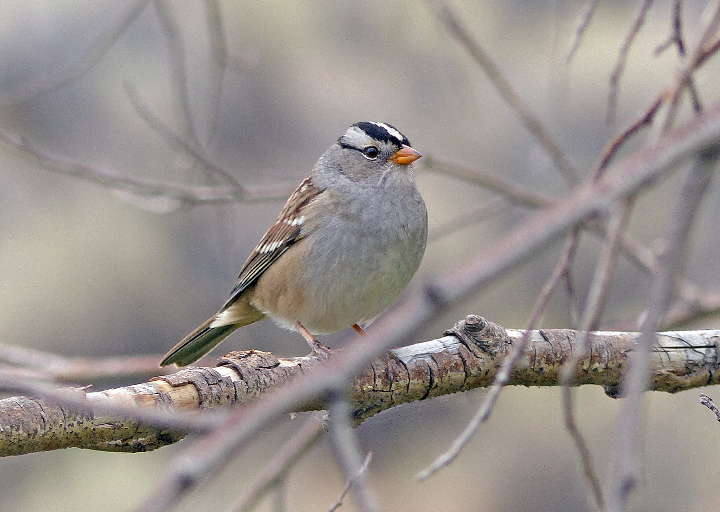Winter can be a tough time for wildlife.
Songbirds, for example, rely on wild food sources for their survival. During severely cold and harsh winter weather, many bird species rely on feeders to supplement their diet.
Feeding birds
Different birds have different requirements; what appeals to a chickadee might not appeal to a house sparrow or woodpecker.
What kinds of food are best to offer?
A few general tips. Select a birdseed without millet, oats or other fillers. Black-oil sunflower seeds are a great choice, as they appeal to the greatest number of species.
Feeders are most useful when they’re not buried by snow, so make sure they’re covered.
Providing suet is a great idea this time of year. It provides a high-energy food source for insect eaters at a time insects are in short supply.

A frequent garden visitor, chickadees, above, are also commonly found in the coniferous forests of western Oregon. Photo by Mark Nikas, Eugene
If you’re a serious bird lover, you might like making your own “bird cakes.” Mix together crunchy peanut butter, crumbs, raisins and melted suet – just avoid peanut butter high in sugar and salt.
Diseases can be spread around feeders via droppings or moldy seed. Keep feeders clean, dry and mold-free by washing with warm, soapy water. You can use bleach (one part bleach to nine parts water) to rinse the feeder from time to time; dry thoroughly.
Hummingbirds
Offer hummingbirds the standard mix of four parts water to one part sugar. Also, when scattering seeds for foragers like towhees and juncos, do so in areas that are well-away from places a cat may hide.
Speaking of cats, did you know cats are the most significant non-native animal species causing the decline of bird populations? Consider keeping cats indoors, where they’ll be safer.
Water can become critical in winter
Birds still need to bathe and drink during the winter. If you provide a birdbath, keep it clean and free of debris.
Bird boxes: a fun winter project
Cavity-nesters like bluebirds, woodpeckers, kestrels and others build their nests in tree cavities.
Where natural cavities are in short supply, nest boxes can be a great resource. If you’d like to build a birdhouse to put out this spring, remember each species has its own ideal specifications. You can find design specifications for many species here.
About forested property
 If you’re lucky enough to own forested property in the urban-interface (the area where developed areas meet forestland), you’ll want to create as diverse a forest structure as possible. This gives birds better nesting opportunities.
If you’re lucky enough to own forested property in the urban-interface (the area where developed areas meet forestland), you’ll want to create as diverse a forest structure as possible. This gives birds better nesting opportunities.
Different tree species, tree heights and spacing are all important. When in doubt, check with your state’s forestry agency.
Creating a bird-friendly sanctuary
Come spring, remember that a good wildlife garden includes more than just a bird feeder. It provides food, shelter and water, and incorporates a wide variety of native plants and shrubs – especially those that produce berries and seeds.

Stellar Jays, above, are omnivorous, foraging for food on the ground and in trees and bushes. They especially enjoy shelled peanuts and unsalted sunflower seeds. Photo: Cynthia Orlando
Good plants and trees to choose in Oregon include snowberry, Oregon grape, red-flowering currant, western serviceberry, Douglas-fir and dogwood.
Most good native plant nurseries can provide you with many more ideas about native plants that benefit your local bird population.
More tips
Leave fruit and berries on trees, hedges and bushes to provide a natural source of food throughout the winter.
Also, don’t be overly anxious to rake leaves, as leaf litter can supply the birds with a feast of seeds, nuts, insects and other foods.
By following these guidelines you’re sure to attract native bird species like American goldfinches, Stellar jays, downy woodpeckers, black-capped chickadees, varied thrushes, dark-eyed juncos and golden-crowned sparrows.
For more information: https://www.audubon.org/get-outside/activities
~ ~ ~
Cynthia Orlando is an avid birder and certified arborist. Now semi-retired, she worked for both the Oregon Department of Forestry and U.S. Forest Service. A lifelong music lover and member of PRPs Music Team, you can follow her on Twitter.
- Two artists share songwriting insights - December 4, 2024
- 2023: An abundance of music to love - December 3, 2023
- Attract birds to your garden this fall and winter - September 29, 2023









Leave A Comment